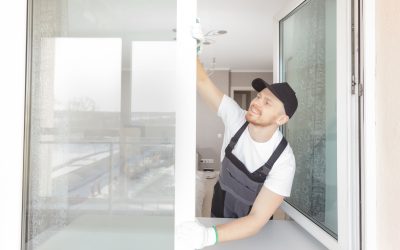Inflammation is a natural response by your body to injury, infection, or stress, but when it becomes chronic, it can cause pain, swelling, and discomfort. Traditional treatments for inflammation often involve medications or physical therapy, but many individuals are turning to Red Light Therapy as a complementary, non-invasive treatment to reduce inflammation and promote healing.
If you’re new to Red Light Therapy (RLT), you may be wondering how it works, what results to expect, and how to get the most out of your sessions. This beginner’s guide will walk you through the basics of Red Light Therapy for inflammation, its benefits, and the best practices for achieving optimal results.
What is Red Light Therapy?
Red Light Therapy involves using low-wavelength red light to penetrate the skin and tissues, stimulating various biological processes that promote healing. Unlike ultraviolet (UV) light, which can damage the skin, Red Light Therapy uses a specific wavelength of light that is safe and beneficial for the body.
The therapy works by enhancing mitochondrial function in the cells, increasing energy production (ATP) that is essential for cell repair and regeneration. This increase in cellular energy helps to reduce inflammation, speed up recovery, and support overall healing.
At Mountain Oasis Wellness, we use advanced Red Light Therapy systems to help our clients effectively manage inflammation, promote healing, and experience relief from pain and discomfort.
How Red Light Therapy Reduces Inflammation
1. Stimulates Cellular Repair
Inflammation can cause damage to tissues and cells, leading to pain, swelling, and longer recovery times. Red Light Therapy stimulates the production of collagen, the protein responsible for skin and tissue repair. This helps regenerate damaged cells, reduce inflammation at the site of injury, and accelerate the healing process.
2. Enhances Blood Flow
Red Light Therapy helps to increase blood circulation in the affected area. The enhanced blood flow delivers oxygen and essential nutrients to the tissues, helping to reduce swelling and inflammation. This improved circulation also aids in the removal of metabolic waste products, further contributing to the healing process.
3. Reduces Inflammatory Cytokines
Red Light Therapy has been shown to regulate the production of inflammatory cytokines, which are proteins that play a key role in the inflammatory response. By balancing the levels of these cytokines, Red Light Therapy can reduce inflammation and promote a more balanced immune response.
4. Alleviates Pain
In addition to reducing inflammation, Red Light Therapy can help alleviate pain associated with inflammation. It stimulates the release of endorphins, the body’s natural painkillers, helping to reduce discomfort and improve overall well-being.
What to Expect from Red Light Therapy for Inflammation
1. Duration of Sessions
Each Red Light Therapy session typically lasts between 10 to 20 minutes, depending on the area being treated and the severity of the inflammation. During a session, you will typically relax while the light penetrates your skin, allowing your cells to absorb the light energy.
Sessions are painless, and most people find them relaxing, as the warmth of the light can help soothe tight muscles and reduce discomfort.
2. Treatment Frequency
For best results, it’s recommended to start with 2-3 sessions per week for the first few weeks, particularly if you’re targeting an acute injury or chronic inflammation. As your inflammation decreases, you can reduce the frequency of treatments to maintain the benefits.
Many individuals see noticeable improvements in inflammation after just a few sessions, but for long-term results, consistent use is recommended.
3. Gradual Results
Red Light Therapy works by stimulating your body’s natural healing processes, which can take time. Some people may notice immediate pain relief and reduced swelling after their first few sessions, while for others, it may take several treatments before the full benefits are felt. The key is consistency—sticking to your treatment plan will yield the best results.
4. Safety and Side Effects
Red Light Therapy is a safe and well-tolerated treatment with minimal side effects. Unlike other treatments that may require medications or invasive procedures, RLT has no known long-term risks. Some people may experience mild redness or warmth in the treated area after a session, but this is usually temporary and resolves quickly.
It’s important to follow the guidance of a trained therapist to ensure you’re using the correct settings and duration for your condition.
Best Practices for Reducing Inflammation with Red Light Therapy
To get the most out of Red Light Therapy for inflammation, consider these best practices:
1. Target the Right Area
For localized inflammation, focus the treatment on the specific area of discomfort. Red Light Therapy is particularly effective for joint pain, muscle inflammation, and conditions like arthritis or tendonitis. Make sure to discuss the area of concern with your provider to ensure optimal treatment.
2. Stay Consistent with Sessions
Consistency is key when it comes to Red Light Therapy. To achieve the best results, stick to a treatment schedule and attend your sessions regularly. Over time, you’ll experience a reduction in inflammation, improved joint mobility, and relief from pain.
3. Complement with Other Treatments
For those with chronic or severe inflammation, Red Light Therapy can complement other treatments such as physical therapy, medications, or cryotherapy. Combining these therapies can enhance the healing process, reduce recovery time, and provide comprehensive care for inflammation.
4. Maintain a Healthy Lifestyle
While Red Light Therapy can reduce inflammation, it’s important to maintain a healthy lifestyle to support long-term healing. Eating an anti-inflammatory diet, exercising regularly, staying hydrated, and getting enough rest can help reduce overall inflammation in the body and promote optimal health.
5. Consult with a Professional
Before starting Red Light Therapy for inflammation, it’s always a good idea to consult with a healthcare provider to ensure it’s the right treatment for your specific condition. A professional can help tailor a treatment plan to meet your individual needs and guide you through the process.
Is Red Light Therapy Right for You?
If you’re struggling with chronic inflammation, pain, or slow healing, Red Light Therapy may be the solution you’ve been looking for. This non-invasive, drug-free treatment can complement other therapies and help you achieve better results in reducing inflammation and promoting recovery.
At Mountain Oasis Wellness, we offer advanced Red Light Therapy systems designed to help reduce inflammation, relieve pain, and accelerate healing. Whether you’re recovering from an injury or dealing with chronic conditions, we can help guide you on your journey to wellness.
Visit Mountain Oasis Wellness today to learn more about how Red Light Therapy can support your inflammation treatment plan. Our team is here to provide personalized care and help you achieve lasting relief.



